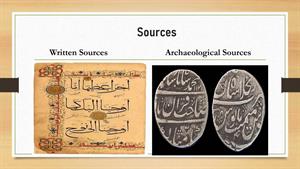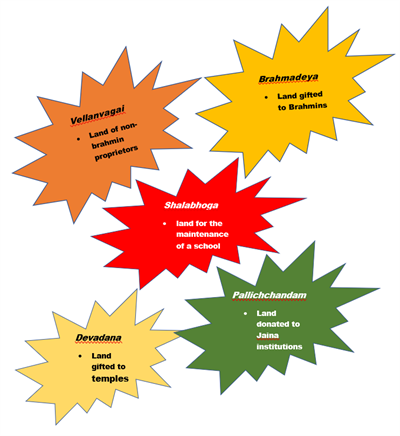PDF chapter test TRY NOW
Introduction:
In Indian history, the Early Medieval and Later Medieval periods are described as AD (CE) \(700\) to \(1200\) and AD (CE) \(1200\) to \(1700\). Historians studying Medieval India have access to a wealth of information from a variety of sources. The accounts left by Arab, Persian, and Turkish chroniclers complement the details gleaned from inscriptions, monuments, and coins. These accounts are rich in detail and include first-hand details on kings' lives, but they provide no information on the lives of ordinary citizens. The courtiers and chroniclers views are often biased, written in hyperbolic language, and exaggerate the king's accomplishments.

Let us now look at the numerous sources available for researching Medieval India's history. With the help of sources, we look into the specifics of political, economic, and socio-cultural changes.
Inscriptions:
The study of inscriptions in known as Epigraphy.
Writings etched on solid surfaces such as bricks, blocks, temple walls, and metals are known as inscriptions. The king's royal decrees, dedications and gifts, monuments erected in remembrance of war successes, and those erected in memory of fallen warriors all provide a wealth of knowledge about the period in question.
The inscriptions and copper plates reveal various types of lands gifted by the Chola kings. They are as follows:
The inscriptions and copper plates reveal various types of lands gifted by the Chola kings. They are as follows:

The source value of copper-plate grants, which were classified as legal documents, are essential. From the \(13^t\)\(^h\) century onwards, Islamic-Persian practises, and the comparatively high cost of copper plates made palm leaf and paper cheaper alternatives.
Several copper-plate grants of the later Chola period [i.e.] from the \(10^t\)\(^h\) to \(13^t\)\(^h\) century has been recorded gifts to individual Hindu, Buddhist, or Jaina priests or teachers, as well as eminent people. Both the giver and the receivers are listed in great detail. In comparison, the quality of most stone inscriptions varies. The generosity of a donor is preserved in stone inscriptions.
The giver is the centre of attention. Rajendra Chola \(I\)'s Tiruvalangadu plates and Sundara Chola'sAnbil plates are notable examples. The Uttiramerur inscriptions in the Kanchipuram district explain how the village administration was carried out.
Several copper-plate grants of the later Chola period [i.e.] from the \(10^t\)\(^h\) to \(13^t\)\(^h\) century has been recorded gifts to individual Hindu, Buddhist, or Jaina priests or teachers, as well as eminent people. Both the giver and the receivers are listed in great detail. In comparison, the quality of most stone inscriptions varies. The generosity of a donor is preserved in stone inscriptions.
The giver is the centre of attention. Rajendra Chola \(I\)'s Tiruvalangadu plates and Sundara Chola'sAnbil plates are notable examples. The Uttiramerur inscriptions in the Kanchipuram district explain how the village administration was carried out.
Reference:
https://i.ytimg.com/vi/wQ2JVmU2XZQ/maxresdefault.jpg
